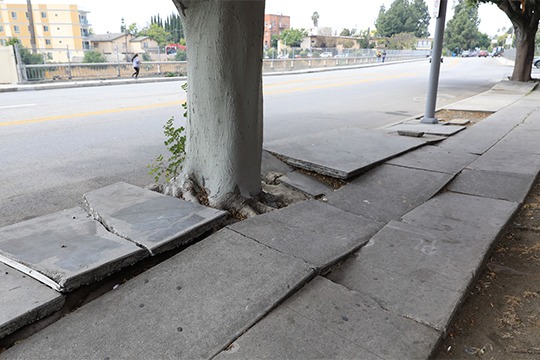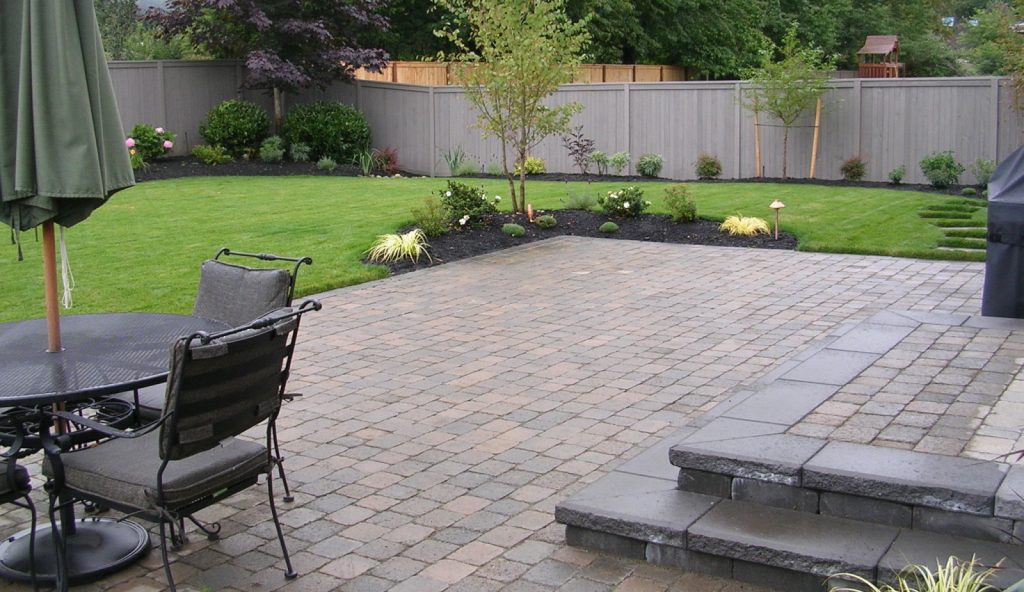Trees provide the shade that pedestrians appreciate as they go for a walk. But when the tree roots push concrete slaps upward a smart solution is needed.
Is there a better picture of what the word “upheaval” means than when tree roots push a sidewalk slab out of place? And isn’t it amazing how a slow-growing plant can move something that weighs 150 pounds per cubic yard – about 200-300 pounds per concrete slab (depending on sidewalk slab dimensions)?
What’s not so interesting is the expense and liability risk associated with uneven, heaved sidewalks. A trip-and-fall accident can cost property owners a bundle, depending on who bears that responsibility, even if it is technically on city-owned property. That risk might be equally shared between a municipality and homeowners, but in any scenario a flat sidewalk is preferred for all concerned.
While a concrete contractor initially laid those sidewalk slabs, they may not be the first person to call with those slabs are displaced by aggressive tree roots. Something has to be done about the roots, work out of the scope of your typical asphalt paving company. Once the roots are dealt with, a good concrete contractor will come much in handy.
The most common cause of sidewalk slab upheaval is tree roots, which are nature’s way of anchoring the tree, making it resilient to storms, and of course how the tree gathers water and nutrients from the ground. Tree roots can extend up to three times farther from the trunk than the drip line (branches) of the tree itself. The cultivar of tree selected can make this bad or better, and most cities provide some guidance on which will thrive, provide shade, minimize nuisance (dropping seeds and sap), and best withstand storm conditions. Importantly, silviculture research has improved our knowledge about this in recent years.
But a long legacy of poor choices and inartful placement of problematic trees in the strip between sidewalks and curbs (often called parkways) has created concrete sidewalk slab upheaval in neighborhoods all across America. As municipalities largely decide on the fate of the trees themselves – and the effects of urban heat islands make towns and cities loath to remove mature shade trees – more often that means making do with the tree, tree roots, and heaved sidewalks in a number of ways:
Call an arborist: An arborist will consider the health of a tree in all respects (tree surgeons largely focus on branches, above the ground). The arborist will look at how tree roots might be cut to enable replacement or repositioning of the concrete sidewalk slabs. It must be noted that root pruning, inground, is usually not a permanent solution – it grows back – and can potentially destabilize the tree and otherwise compromise its health. So the consultation of a professional is strongly advised.
Excavation of subsoil: Another way to manage around tree roots is to lift the concrete slab (easy, right?) and remove soil below the tree roots. Filling the void with loose clean pea gravel will allow the roots to push down instead of up, enabling the sidewalk to remain flat to grade.
Create a geogrid: Basically, this involves joining several slabs together to create sufficient force to hold the tree roots down. Employing a metal grid, joining two or more slabs of concrete together (more would be better), the larger slab sits on a gravel bed that provides space for the roots to grow.
Because of the Americans with Disabilities Act, it is beholden on municipalities and property owners to ensure a smooth sidewalk. On private, single-family residential property it may be acceptable to build steps or bridges over tree roots. But in any case, it’s a smart idea to call in an arborist who is able to assess the situation and propose a comprehensive and long-lasting solution.


